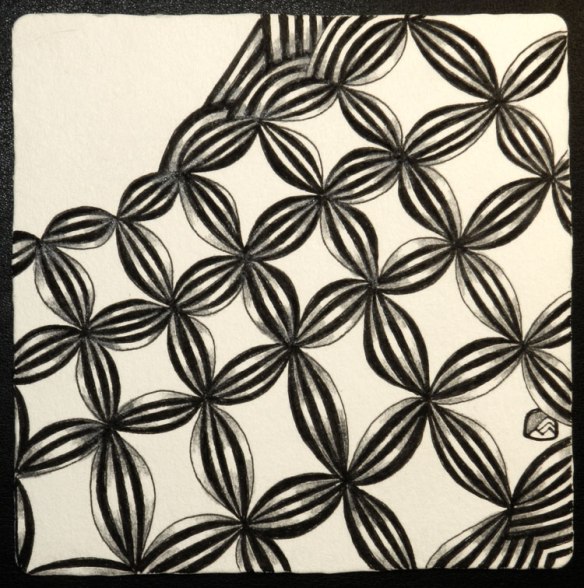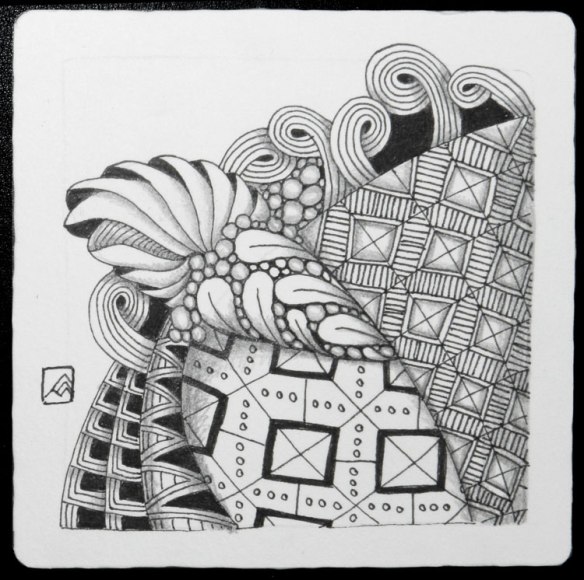With this week’s challenge no. 120, diva Laura Harms provided, for me at least, a chance to really dig in and explore a tangle. Her assignment: use bales, one of the official tangles of Zentangle, and play with it. Here are the instructions in an issue of the Zentangle newsletter. One of the fun things about Zentangle is that play is allowed and encouraged. There’s even a name for creating variations on a tangle: tangellations.
In my first tile, as is often the case, I loosened up and tried a few tangellations that didn’t stray too far from the grid with arcs on all four sides.
I felt that I wanted the tic-tac-toe grid lines to go away, or at least not be as apparent, so I came up with the next tile to try different options.
Ah-ha! I really liked the tangellation with high-contrast stripes, so I decided to fill a tile with that idea.










